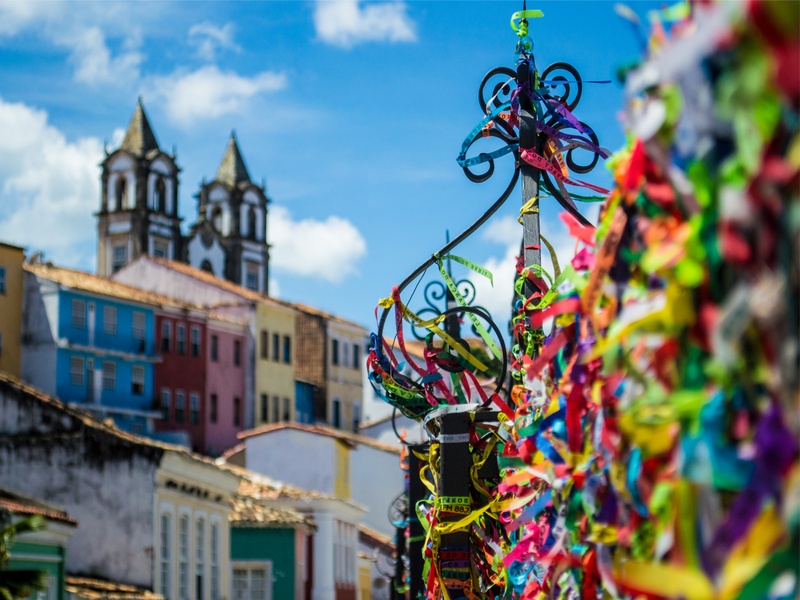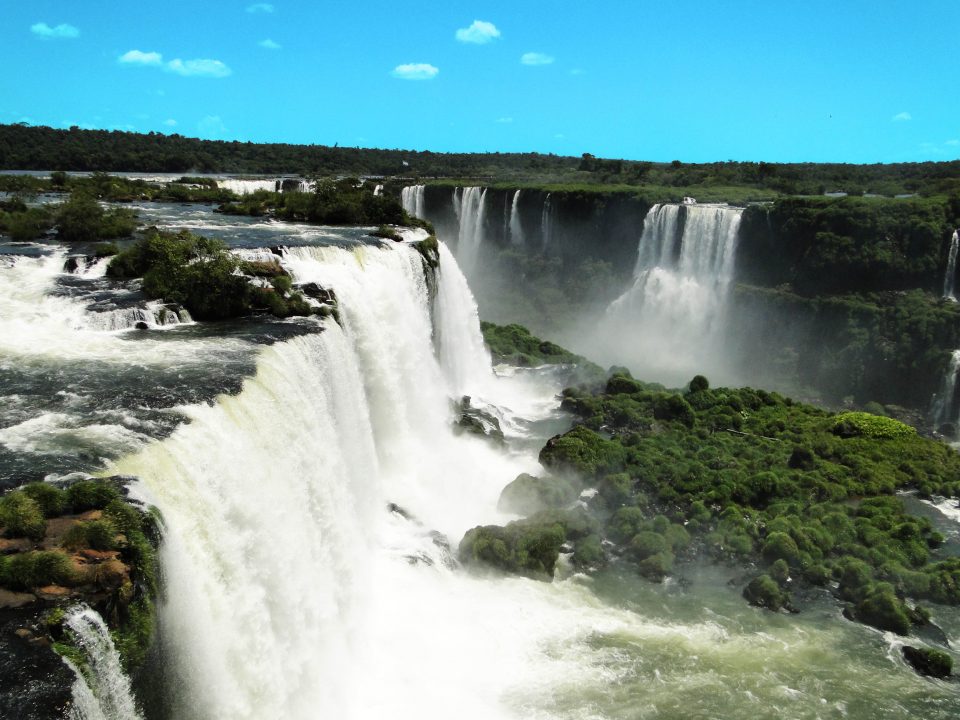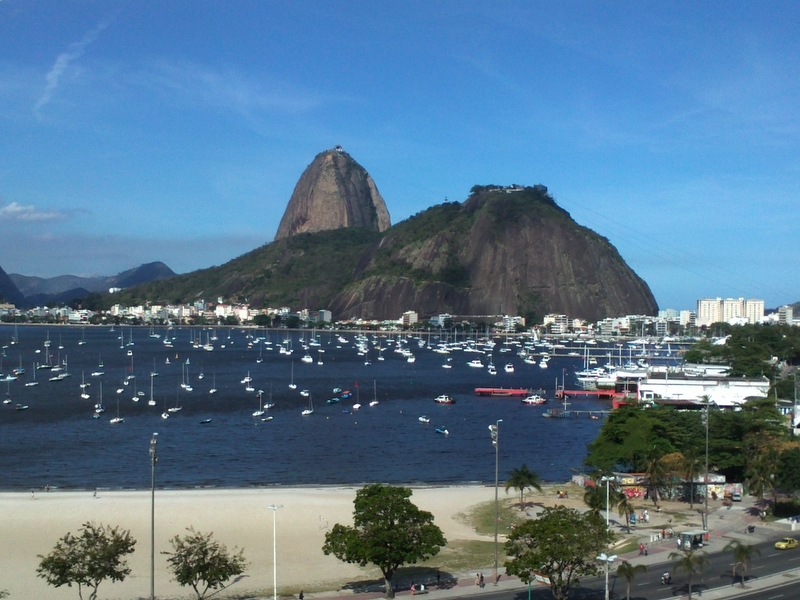Salvador is the capital of the state of Bahia in Brazil and is considered to be one of the birthplaces of Brazilian culture. Salvador has the reputation of being a relaxed and easy-going reputation with a vibrant music scene and a love of carnival celebrations. Salvador is a wonderfully colourful city both in its culture but also in its architecture too.
THINGS TO DO AND SEE IN SALVADOR BAHIA
Salvador has a 100m cliff that runs the length of the bay dividing the city into Cidade Alta (up on the cliff) and Cidade Baixa (down in the bay). At the centre of Cidade Alta lies one of the liveliest parts of town around the two squares Praça da Sé and the Terreiro de Jesus. This is a great place to experience life in Salvador from the street cafes and restaurants to the many food stalls around the centre. The Cathedral Basilica of Salvador is also here and was once a Jesuit Church built in the 17th century in the Mannerist style that was popular in Brazil at the time. The small church to the north of the centre Igreja do Nosso Senhor do Bonfim is one of the most popular pilgrimage sites in Brazil.
The central museum Museu Afro-Brasileiro is a great place to find out the history of Salvador and how it has changed over the centuries and also for a glimpse of the slave trade during the 16th century. The Museum of Modern Art (Museu de Arte Moderna) can be found in Solar do Unhão on Baía de Todos os Santos and is also a great place to relax and watch the sun set at the end of the day.
Salvador is also famous for its great beaches with many of them concentrated to the north that are popular for both tourists and locals alike, so they can get very busy during the weekends. There are fantastic beaches all along the coast that include fine sand and calm waters suitable for families. One of the great attractions in the city is Salvador’s giant Carnival, one of the largest in the world which lasts for a whole week. The carnival includes parades, floats, music and a lot of dancing so if you’re lucky to be here during carnival time expect to join in with a great party.
EATING OUT & NIGHTLIFE IN SALVADOR BAHIA
For South American cuisine, Bahian restaurants are considered to be amongst the best. Street stalls also offer a quick taste of Salvador on the move Abara – a bean paste and onion wrap cooked in a banana leaf and acarajé – fritters made from black-eyed peas and onions that are covered in shrimp paste.
GETTING AROUND IN SALVADOR BAHIA
The old city centre is easily explored on foot and to get between the Cidade Alta and Cidade Baixa, the cable car (Elevador Lacerda) is the best option and quite cheap. There are plenty of taxis and these probably offer the quickest route getting you to where you want to go and if they don’t have a metre, be prepared to haggle for your price. The bus service is frequent and affordable but can be confusing so it is best to plan your route in advance to travelling knowing the location of your hostel should you need to ask for directions back.




